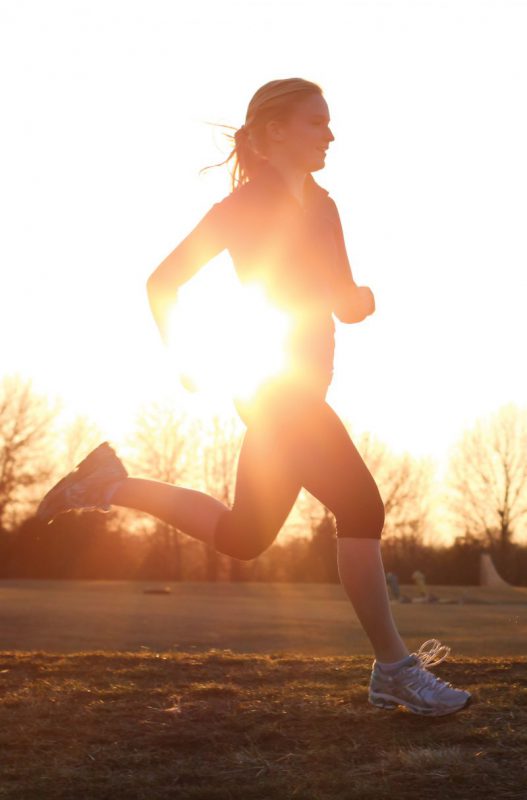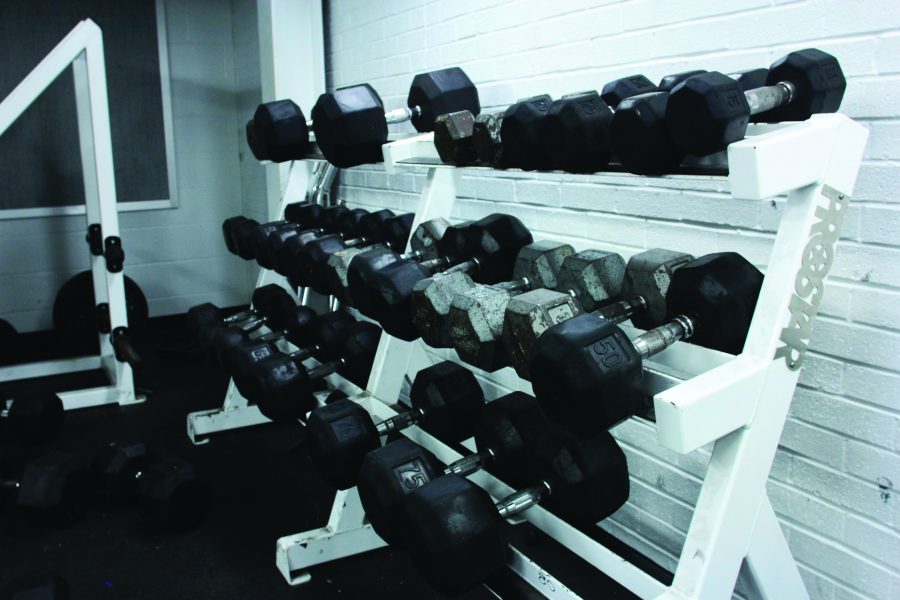In recent years, HIIT, or high intensity interval training, has gained a cult following. Boasting an efficient fat-burning effect, this type of exercise usually consists of burpees, squat jumps, sprints and other similar movement patterns. What’s more, HIIT’s application can go far beyond one’s weight-loss pilgrimage. The medical world has been looking into its heightened ability to treat chronic illness such as heart disease, stroke, diabetes and even Parkinson’s, according to The New York Times.
Though senior Trevor Twehous doesn’t suffer from disease, he has found HIIT-style workouts to be beneficial in improving his performance on the football field and on the track.
“I’d say [I’ve leaned more] toward short bursts like when I did play baseball, running the bases it’s not a long distance, it’s short distance — base to base. Then in football, you’re not going to run that much at one time. You’re going to run 10 yards, 20 yards. You’re not going to run a lot,” Twehous said. “Throughout my sports career, it’s always been short distance. It’s never been a long distance. That’s what I have to train for all the sports I do.”
On a cellular level, sprinters mostly make use of their fast-twitch (FT) muscle fibers instead of slow-twitch (ST). The difference in the two types is that FT is more efficient with low-oxygen levels and usually outputs a large amount of force during a small period of time. Rory Cunningham, a kinesiology graduate student of the University of Missouri-Columbia, is conducting research on the benefits of HIIT for curing fatty liver disease. Within his studies, Cunningham has learned about the positive outcomes of HIIT.
“Getting your heart rate pretty high, even 90 percent of your maximum, makes your blood flow through your vessels much quicker. That increases the stress on the vessels but actually . . . it changes the blood vessels to help vessel function,” Cunningham said. “Working at a high intensity allows your muscles to withstand [exercise] longer. It helps delay that burning sensation.”
For Twehous, it’s likely a muscular composition made up by a majority of FT fibers has aided in his explosive exercise-based sports career. Still, by reinforcing this through workouts, he likely benefits from the muscle-building and fat-burning that HIIT offers. Twehous sees the benefit of both factors.
“I can definitely see [how genetics can play a role.] Both my parents were athletes, and they only did short distance. They were never the long distance people. For endurance, I can’t run a long distance; I’m more built for short distance,” Twehous said. “Everybody has their own thing that they’re good at. I do believe people can be built for long distance and people can be built for short distance. It’s just what they’re better at. That’s just what they train for.”
The differences in practice for the short-distance and long-distance athletes are especially evident during track practice, particularly when it comes to time. With 60-minute runs, long-distance runners leave well after sprinters. Freshman long-distance runner Olivia Declue recognizes that specificity is important but doesn’t love the drawn-out runs.
“I think [long distance and short distance practices] are effective in different ways. Obviously, long distance running is better for endurance, but sprinters don’t necessarily need [that,]” Declue said. “[It can be annoying] because we’ll be coming back from our stretching after our run, and they’ll already be gone. Our warm-up is longer than their entire workout, so that’s kind of annoying, but I guess I understand it.”
Of course, for those who don’t need fidelity to one or the other to gain a competitive edge, a combination of both HIIT and lower-intensity exercise can offer an engaging and successful workout strategy.
“There’s been some evidence that suggests high-intensity can actually improve your physical fitness above and beyond that of low intensity steady state. But, low intensity definitely has its role in a wide variety of settings,” Cunningham said. “[Low intensity] is very simple. It’s a really good doorway to get sedentary people to exercise. Also, it’s much easier on the body. If you do high-intensity training all the time, your body can get beat up a little bit.”
Which exercise do you prefer? Comment down below.
Intense exercise gains momentum
April 30, 2018
























































































